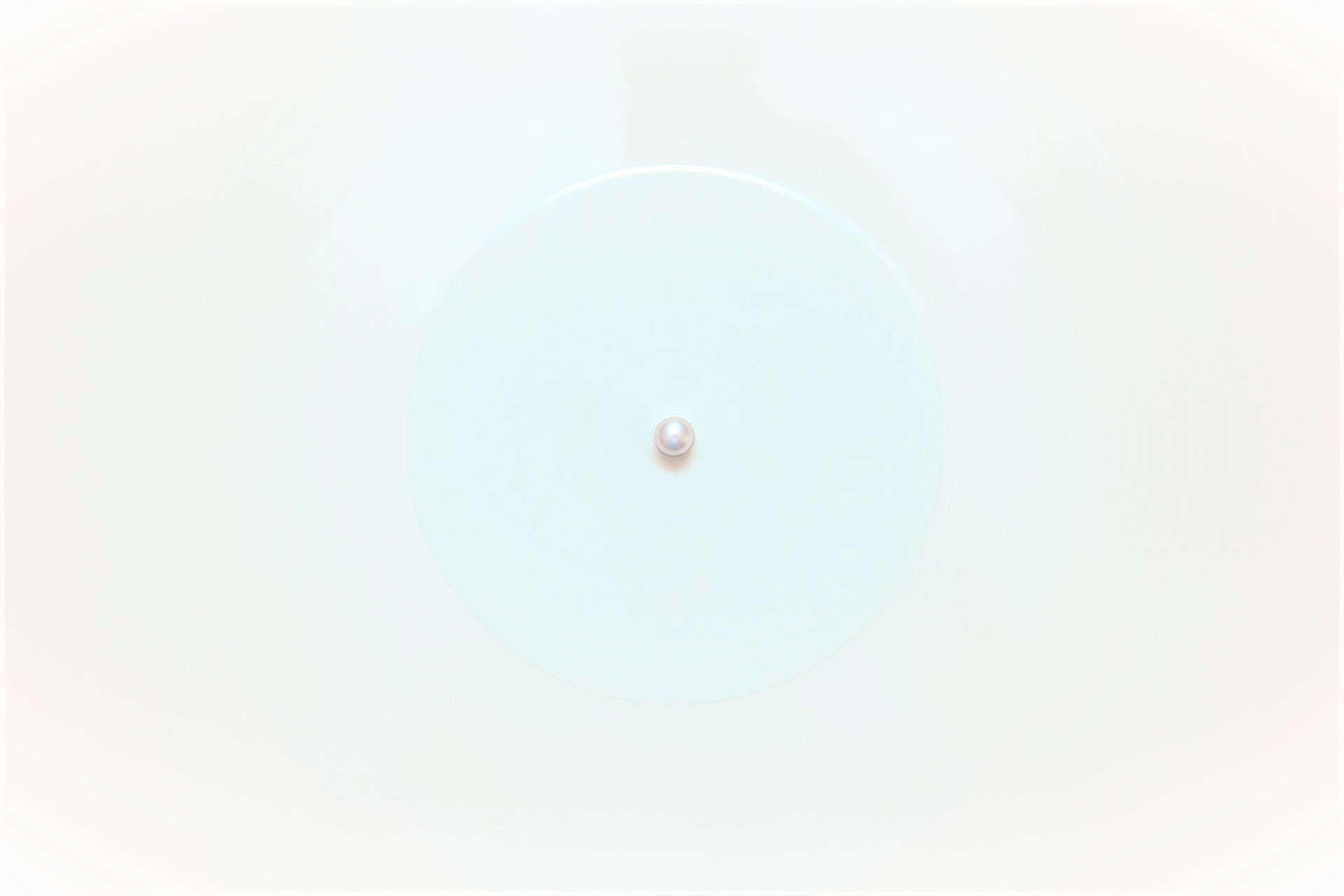Canadian guitarist and former child actor Stan Endersby first came to prominence on the Toronto music scene during the 1960s with a succession of bands – The Just Us, The Tripp and Livingston’s Journey.
In the early 1970s, he recorded with future Motown star Rick James before heading to L.A at the end of the decade where he worked with former Love guitarist singer/songwriter Bryan MacLean. Later, he played alongside original members Bruce Palmer and Dewey Martin in Buffalo Springfield Revisited and also recorded with Toronto legends The Ugly Ducklings.
In October 2022, Endersby returned to England for the first time since leaving in the summer of 1970 to track down his old haunts and to reminisce about his time playing with former Kinks bass player Peter Quaife in the short-lived band, Maple Oak.
Here he talks to Jason Barnard of The Strange Brew about his career after returning home from England in August 1970.
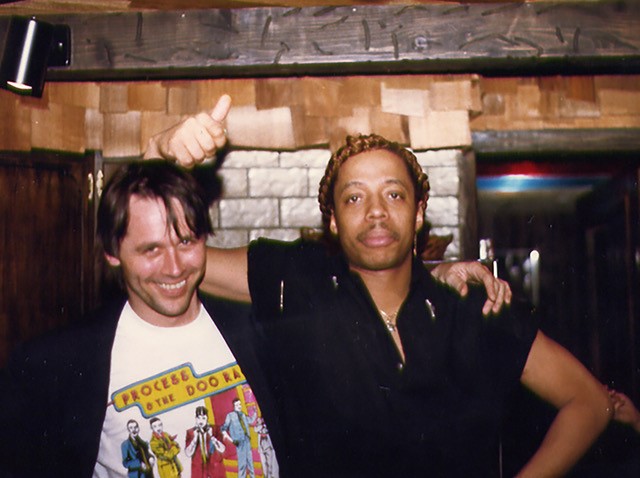
Although your time with Maple Oak and playing with Peter Quaife wasn’t commercially successful, it was an important staging post on a musical career that has sustained you for many decades
Yes, it was definitely a growing period. I had to get serious with my song-writing and singing, so when I got back to Canada I bought my first real acoustic guitar, grabbed my amps and moved to the country. During this time, I would go to Toronto to do gigs and sessions. The scene was bustling.
When you went back to Toronto, you ended up getting some friends together in the studio and Rick James dropped by and joined.
On one early trip to Toronto I visited Murray Shields who at the time was the manager of Eastern Sound. He told me that Neil Young’s right hand man David Briggs was building a new studio in Toronto called “Thunder Sound” and that a few of his engineers had left to work in the new studio.
I told him we were very happy with our engineer in London, John Stewart. They asked me to phone John and see if he would come to Canada. He said he was interested. As a result, Murray Shields went to London and brought John Stewart back to Toronto.
John called me and said, “Stan, you can have some free studio time”, so I invited my musical friends down, [drummer] Pat Little [ex-Luke & The Apostles]; [Hammond organist] Ed Roth and [bass player] Dennis Pendrith, who I had worked with in Livingston’s Journey before coming to England; [bass player] Denny Gerrard [ex-The Paupers]; and [drummer] Bob Ablack [Just Us, Livingston’s Journey, The Tripp]. Ed waltzed in with Rick James and pretty soon we were into this funky-groove thing and it was happening. It quickly became the Rick James show but I was OK with that. Rick was always fun to play music with.
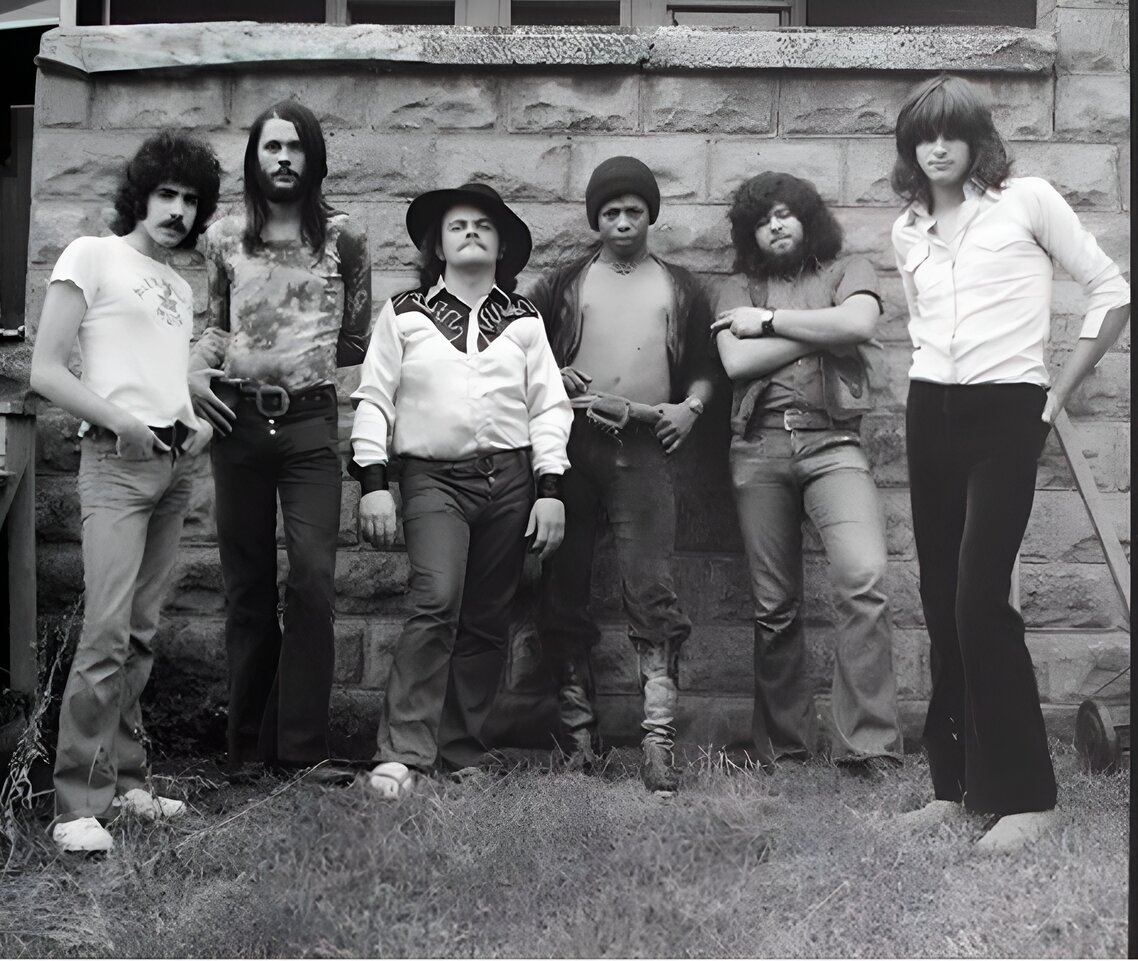
We recorded all of this great stuff with Rick [like “Big Show Down” and “You Make the Magic”]. Two singles came out on RCA as “Heaven and Earth”. My favourite track was “Don’t You Worry” – Dennis Pendrith played a wonderful bass part on that song. Plus, there was a lot of stuff that never came out with some great arranging from Ed Michael Roth. One of the songs featured the lyrics: “Can you tell me, what’s the price you pay for your freedom? Is it worth a dead man on the ground?”
Heaven and Earth – Don’t You Worry
Then Rick did his usual thing. He signs with a company with a couple of tunes and then goes to another company with the same tunes and signs with them. There are multiple companies with the same songs. It’s crazy.
Heaven and Earth – Big Showdown
I knew many years ago when I saw him the first night he played in the Yorkville Village that he was going to be a successful artist. Rick was a talented guy and definitely had the drive.
So Rick and some of the guys took the songs and re-recorded them as Great White Cane. You then worked on a number of projects over the years while living in the country and also in Toronto.
I moved to the country and started doing acoustic music. I had a band called Buckwheat Noodle. We opened for Jessie Winchester and we did some recordings at Manta Sound and we did the first “Earth Day” festival. I was still playing a lot of electric guitar and doing sessions.
A lot of my musical friends would come out to the country and visit. Brent Titcomb, Tommy Graham, Keith McKie, David Rea, and many more.
One night I went into the city to hear Rough Trade. Kevin Staples and Carol Pope were good friends and I would jam a lot at their apartment and played on some of their early demos. I really liked what they were doing. They really wanted to work with Bernie Finkelstein, which they did.
That night I ran into Bruce Palmer. We first met when he was in Jack London and The Sparrows. He then went on to play with The Mynah Birds and of course Buffalo Springfield. He came back with me to the farm that night so he could come to my gig at Irene’s Goodnight, a folk club near my farm. He met some more of his old friends. Vicki Taylor was one of the performers that night. During that time there were a lot of musicians that moved to the country. We would heat our farm houses with wood and had no electricity so there was a lot of acoustic playing going on.
I lived with a beautiful woman, a couple of dogs, had great neighbours, a big garden, a horse, chickens, and I became a bee keeper and even caught a swarm once. Bruce loved coming out to the farm. He got the itch to play again as it had been awhile. I had a great cassette tape recorder and I’d set up, mics on the porch and the grass and monitor through head phones.
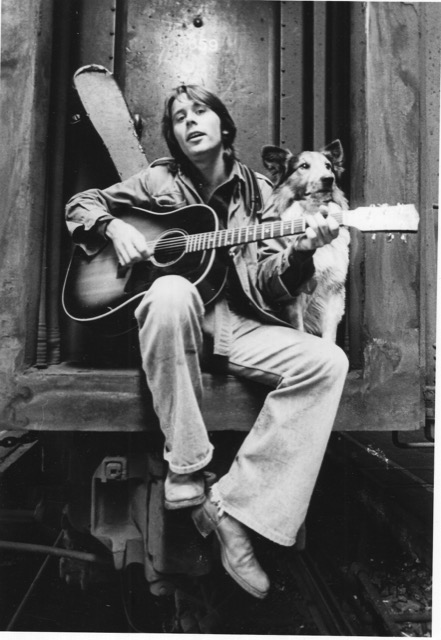
One day he shows up with a beautiful Guild acoustic bass guitar. He said Neil Young had got it for him. Bruce enjoyed so many more years of playing which might not have happened without the gift of that bass.
Together, we formed a band with Keith McKie (From Kensington Market). Keith is a wonderful songwriter, singer and guitar player. We called the band The Village and played a lot of gigs. One that stands out was an hour-long gig that was one of the first live radio broadcasts going across Canada called “Live from Thunder Sound”. Bruce was very proud of that.
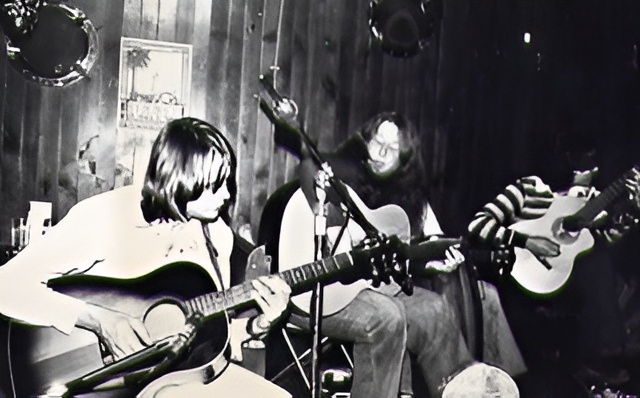
In the late 1970s, you headed down to Los Angeles and ultimately worked with Bryan MacLean from Love.
I ended up doing gigs with Creed Bratton who had been in The Grass Roots. He was also later in the US version of the TV show The Office and we gigged around Zuma beach. Then I got into the New wave scene with a band called Little Itch. The drummer, Michael Rosen, was from Toronto and had played with Jesse Winchester before moving to L.A. We played at Madam Wong’s, East & West, The Troubadour – all of the New Wave clubs. We had a female vocalist named Gail Warning and we had a really good sound. Then that fell apart.
I ran into someone I used to do television shows with as an actor in Canada. He needed help with sound for his cable TV show called New Wave Theatre, which really became something. It ended up with Leon Russell getting involved. We recorded it in Burbank Studios. We recorded over 200 bands, including X, Fear, The Blasters, The Dead Kennedys, Surf Punk’s. It was a great experience. Much later it became a very short-lived network show.
It was always a wonderful time in Los Angeles. You got something going and that thing disintegrates after a couple of years and you think, “Okay, I am going back to Canada for a while”. But without fail, just when you are almost on your way to the airport… something happens.
I was informed “Bryan MacLean is looking for a guitar player for his band”. I immediately went to the audition and I got the gig.
Bryan’s voice and guitar playing were wonderful. He was writing a lot of great songs. The rhythm section was great. We had Maria McKee who was a powerhouse of a voice. She was very young at the time. Bryan’s focus was to help Maria in any way he could.
We did gigs and ended up playing the Whisky A Go Go on Sunset Strip a few times. After a while Maria wanted to play her type of Rockabilly with some people her own age and Bryan was very upset. I thought it was time to let her do her own thing. She went on to form Lone Justice.
Bryan didn’t want to use the rhythm section we had after Maria left. I never understood this. They were a really tight rhythm section and I think they thought I had something to do with this but I didn’t.
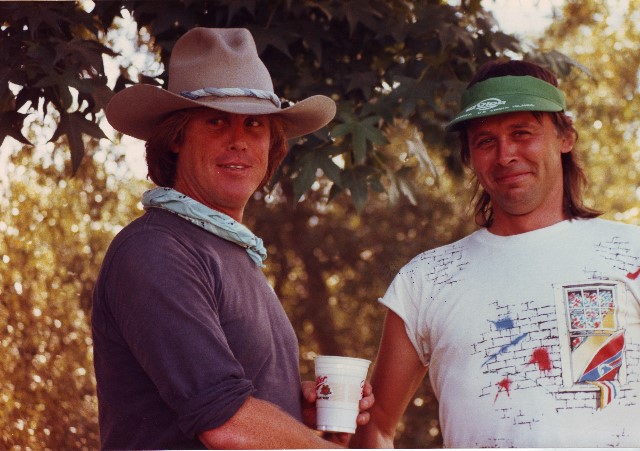
One time we ended up on the same bill as Arthur Lee at The Whisky. It was around 1982 and we went on first.
The first song we did was “Alone Again Or”. Arthur hopped up on stage uninvited and started singing into our bass player’s mic, so they turned off the sound. Then he came over to my mic and they turned off the sound. This musician friend of ours went up on stage and picked Arthur up, took him to the edge of the stage and dropped him down. It was a small drop.
Arthur didn’t take it well. He came back with a boiling cup of coffee and threw it in Bryan’s face in front of a packed house of Love fans waving albums for them to sign. Bryan didn’t miss a beat. He just kept on singing. We finished our set and this is the most amazing part of it all, we went upstairs to the dressing room, and Bruce Palmer and P.F. Sloan are there. About five minutes later Arthur Lee’s roadie knocks on the door and asks if Arthur could use Bryan’s amp. He hadn’t brought one. And Bryan just says, “Yeah, let him”.
Maria McKee wasn’t really in the band at that time, but we brought her on at the end to do three tunes. As always, she went over really well and the crowd loved her.
Bruce Palmer [Buffalo Springfield] was also there that night because he was getting ready to do a musical get together with Neil, Steven, Dewey and Ritchie at Steven Stills’ house. It didn’t happen because Neil had some commitments he had to take care of.
When the next get together was planned, Bruce came to L.A. a week early and rented a studio in the basement in the building where I lived for a week. We were playing eight to ten hours a day because Bruce wanted to get his hands in shape.
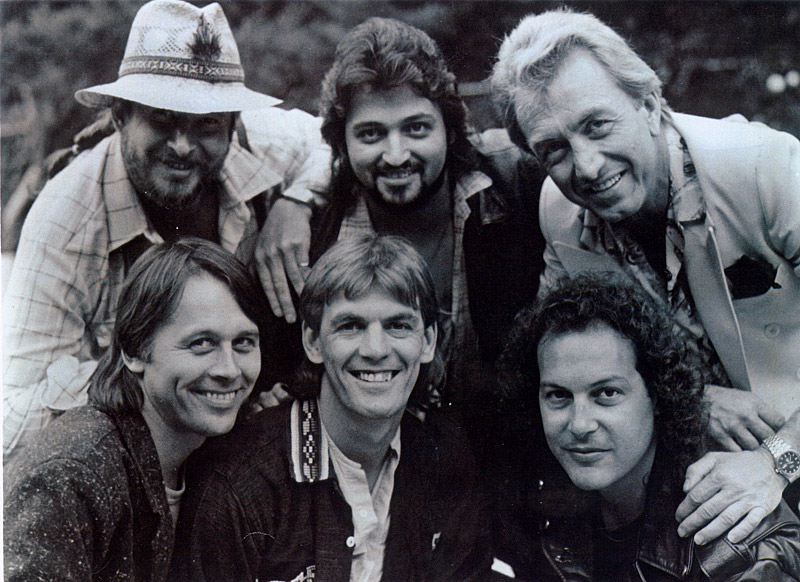
You mention Bruce Palmer and you played in The Buffalo Springfield Revisited in the mid-to-late 1980s
Yes, at that time we got permission from Neil Young and Stephen Stills to use the name Buffalo Springfield Revisited. Gordy Hormel of Village Recorders managed the band. We started off with Frank Wilks, Bruce Palmer, Dewey Martin and myself. We later added Bob Fredrickson and Harlan Spector.
It wasn’t like we were trying to fool people. Everyone knew the other Buffalo Springfield members had their own bands and they knew who we were. We always tried to make sure the “Revisited” was there in the promotional material. Once in a while when it wasn’t there and we did a radio show, Bruce would bring it up. The audience were thrilled having their children enjoying Buffalo Springfield songs they loved.
We did two and a half years of touring through the US, including Vegas, Reno, the Jerry Lewis Telethon, The Palomino, The Forum and Drum’s Across America.
At the Palomino in L.A one night, Stephen Stills sat in with us. He had a great time and you can see the footage; it’s on the internet. That night there was three of the original members – Stephen, Bruce and Dewey. That was the first time in many years that you had three Buffalo Springfield together on stage. The crowd loved it.
There were a lot of shows with bands from the Sixties in those days. They all would have a few original members; The Mamas and Papas, Mitch Ryder, Richie Havens, Spirit, Dick Dale, The Chambers Brothers. We also did a gig with Dave Mason and The Band at the Fox Theatre – it was the first gig after Richard Manuel’s passing.
We did a ‘back to the Sixties’ festival gig and Bryan MacLean and PF Sloan were on the same bill. I brought Bryan on the bus and we sat around and we played his tunes. He said to me, “You know my songs better than anyone.” He was such a powerful songwriter.
Buffalo Springfield Revisited – Cortez The Killer
Back in Canada I worked as a Video Editor and Camera Operator. Also did a lot of voiceovers for television and did some commercial camera work with Roger Mayne, an old friend from the early days in Yorkville.
Roger wanted to do a new album with new material for his old band The Ugly Ducklings. He wanted me to play bass. Dave Bingham and Glen Bell were on board. Kid Carson was on drums.
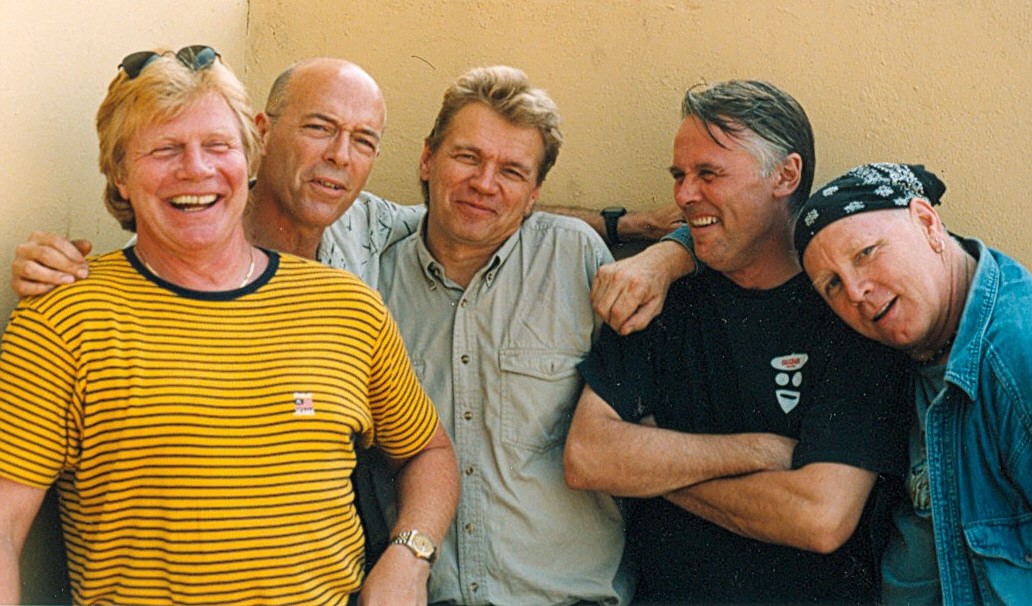
We went out and did gigs and a TV special with a lot of bands from the early Sixties. It was a lot of fun to see old friends we hadn’t seen in years.
Then we recorded our album with the original drummer Robin Boers. The album was called SNAFU. Produced by Grammy winner Peter J Moore of Cowboy Junkies fame. We played as a band till Roger Mayne passed away.
The Ugly Ducklings – No Hard Feelings
I really enjoyed playing with them. Playing bass on stage and in the studio was a learning experience and great fun. The Ugly Ducklings were a very special band that people remember from the Sixties. After they opened for The Rolling Stones on their first tour of Canada, Mick Jagger said “that the Ugly Ducklings were his favourite Canadian Band”.
Ramblin’ Jack Elliott was playing a gig at a folk venue in Toronto and asked me to sit in for a couple of songs and kept me up on stage for the rest of the gig. We then went on and played the Ottawa Folk Festival together. We played again the next year at the folk venue. Jack’s a very interesting guy to play with because he’s really unique. You have to listen so well to him – it was magical for me. He had some great songs and we worked really well together and he got a wonderful review. That was definitely one of the highlights of my 60 years of playing.
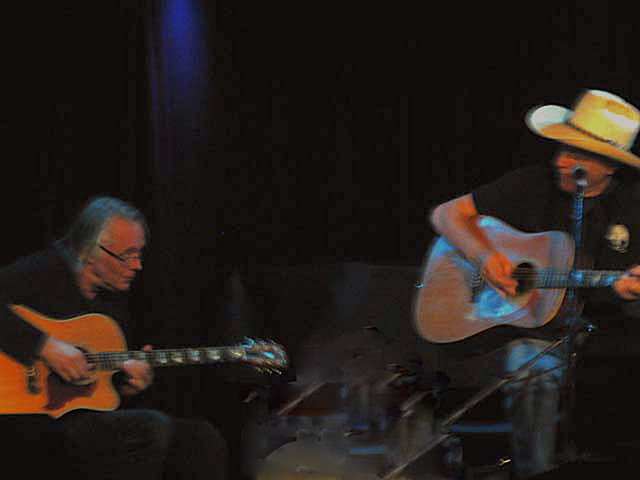
I should add that Peter Quaife came and lived in Toronto and then Belleville, Ontario in 1980. I was living in L.A and Peter would always keep in touch with my brother Ralph so when I came for a visit between touring we’d hang out. In 2005 he moved to Denmark.
In Belleville Peter and I got to play together on stage for the first time in 20-25 years. It was really wonderful.
I also went back to Los Angeles and visited Bryan Maclean. We went out for a meal and then played music. He really acknowledged my song-writing that day which meant a lot. We used to play for hours and hours, and he really inspired me. I learned a lot from Bryan.
I’ve lost most of my friends in this musical community but I still hear their voices and songs. I’m very grateful for every note.
Acknowledgements
Thanks to Nick Warburton for his assistance. Photos acknowledgements: Stan Endersby, Annabel Bonds, John Rowlands, Kairn McLellan.
